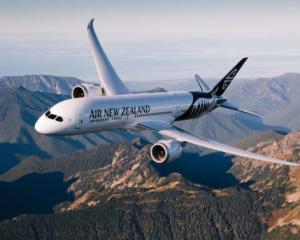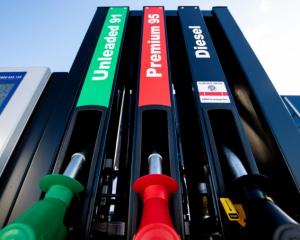Minimising cash burn remains the focus for New Zealand Oil & Gas, which is reliant on its New Zealand gas assets to see it through plunging global oil prices.
While having to post asset value writedowns and a $45million loss for the six months to December, NZOG remains interested in southern oil and gas prospects in deepwater targets off the coast of Oamaru.
Though many years of exploration lie ahead, NZOG is looking at whether there is a South Island market for an onshore plant for processing methane-rich gas, which could be used for electricity generation or replacement of coal in dairy plant operations.
An NZOG spokesman said the company was ‘‘analysing concepts'' to develop markets in the South Island.
‘‘We want to look and see if there is potential for industrial uses ...'' he said.
Offshore from Oamaru, NZOG has permits for the Barque, Clipper 1 and Galleon 1 prospects, with Barque having the most potential, the spokesman said.
NZOG had not yet found a joint venture partner for a southern drilling proposal off Oamaru, nor did it have a potential drilling programme in place, he said.
Despite asset value writedowns, a change in accounting for exploration costs and losing $14.5million from low oil prices, NZOG's net group revenue was up by $11.3million to $65.4million, including a $28.5million contribution from Cue Energy and a $3.4million gain on foreign exchange.
NZOG shares are 13% down on a year ago, but were unchanged after the announcement at 49c yesterday.
Chairman Rodger Finlay said despite the writedowns of asset valuations, the company was performing well and was cash positive with a strong balance sheet.
‘‘The board is intensifying its focus on minimising cash burn,'' he said.
Overall, last year's after tax half-year loss of $7.7million increased to a $45.2million loss.
Chief executive Andrew Knight said despite the loss, NZOG achieved a cash surplus from operations of $31.7million, up by $9million from a year ago.
‘‘The oil price had a negative impact of $14.5million and lower sales reduced revenue by a further $6.1million as shipments were deferred to exploit the potential for some recovery in prices,'' he said in a statement yesterday.
Mr Knight said NZOG had enough cash from long-term gas contracts to sustain the business through the oil price downturn.
‘‘Our Kupe asset remains the centre-piece of the company's performance. At contracted gas prices Kupe has positive cashflow even if oil and lpg prices were nil.‘‘Kupe gas revenues alone more than cover operating costs of the asset,'' Mr Knight said.
NZOG had yesterday begun reporting its ‘‘contingent resources''; being estimates of potentially recoverable volumes of discovered hydrocarbons, where no final decision had been made on the commercial viability of production.
Contingent resources for the half-year were 47.45million barrels of oil equivalent, giving an insight into the volumes being analysed at Kisaran, Indonesia, and Clipper, near the Barque prospect off Oamaru, he said.
‘‘Clipper was discovered in the 1980s and assessed as noncommercial at the time because no market was believed to exist in the South Island for the gas found there,'' Mr Knight said.
Because NZOG had taken a new look at Clipper, it was now analysing whether a potential industrial market for gas may be available in the South Island, he said.
Mr Knight said in response to the present oil price, NZOG posted ‘‘a writedown in our oil-producing assets, such as Tui, where NZOG had a 27.55 interest''.
‘‘The value was reduced by a further $8.7million,'' he said.
NZOG was now forecasting the Tui field's economic life would end in the first quarter of 2018, when Tui would be abandoned.












